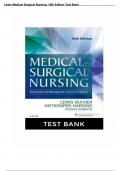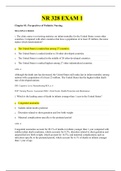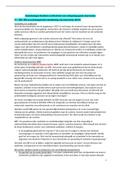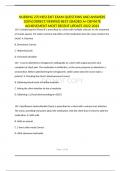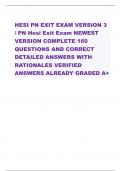Tentamen (uitwerkingen)
Test Bank For Structure & Function of the Body 17th Edition by 2025 Kevin T. Patton & Frank B. Bell & Terry Thompson & Peggie L. Williamson Chapter 1-22
- Vak
- Instelling
- Boek
Test Bank For Structure & Function of the Body 17th Edition by 2025 Kevin T. Patton & Frank B. Bell & Terry Thompson & Peggie L. Williamson Chapter 1-22
[Meer zien]





